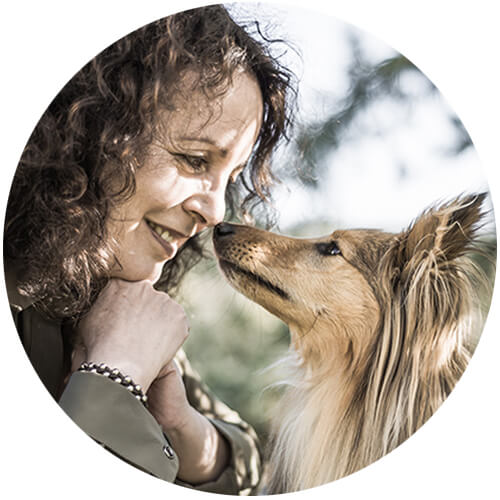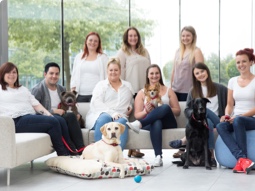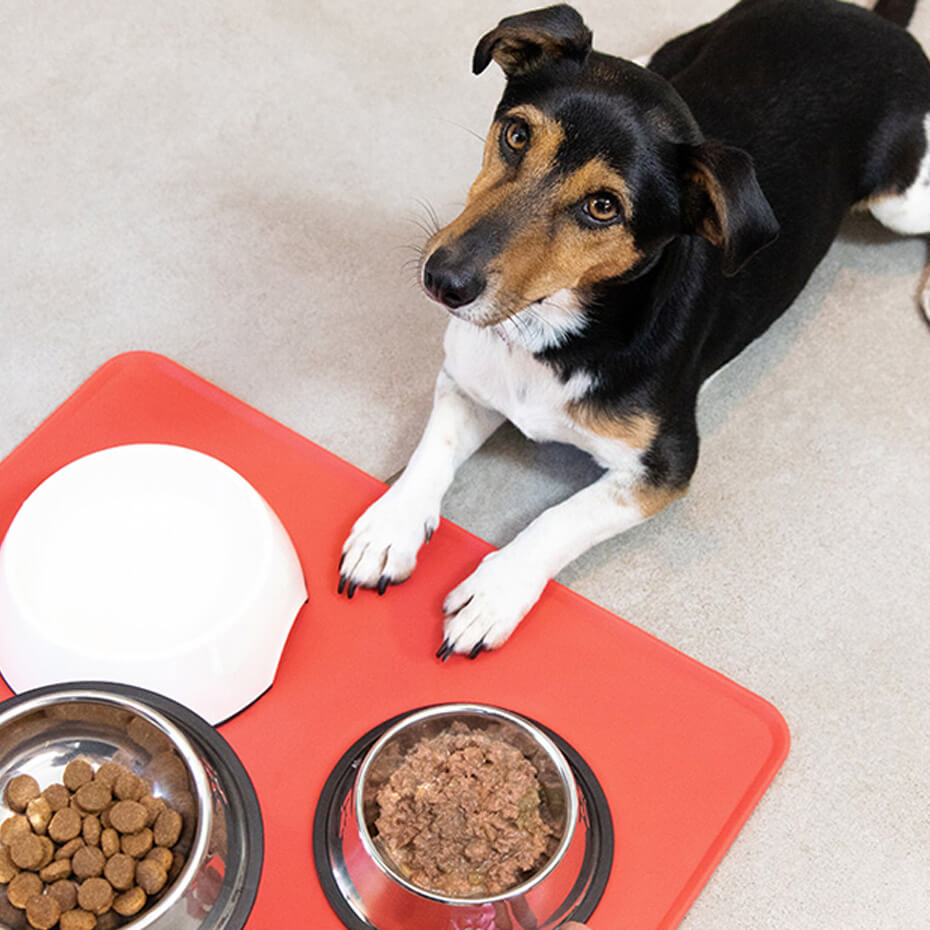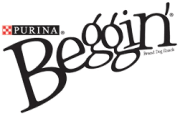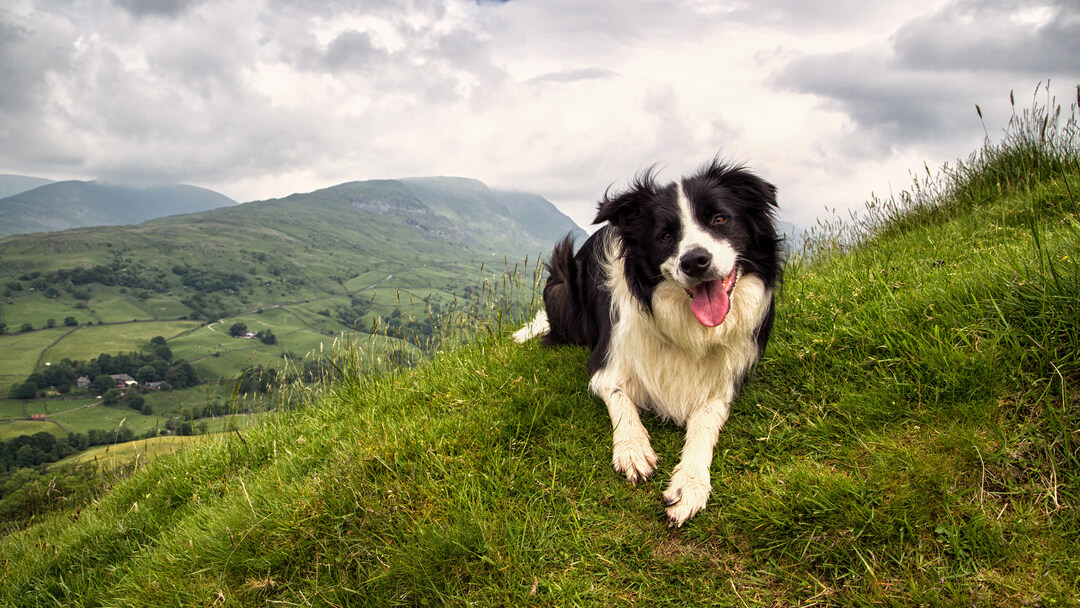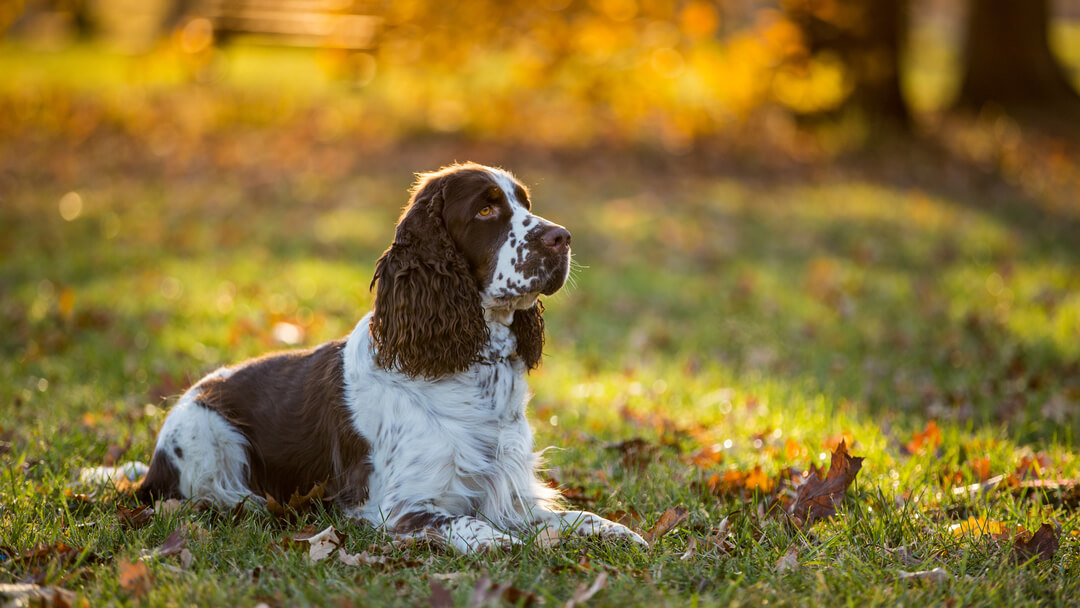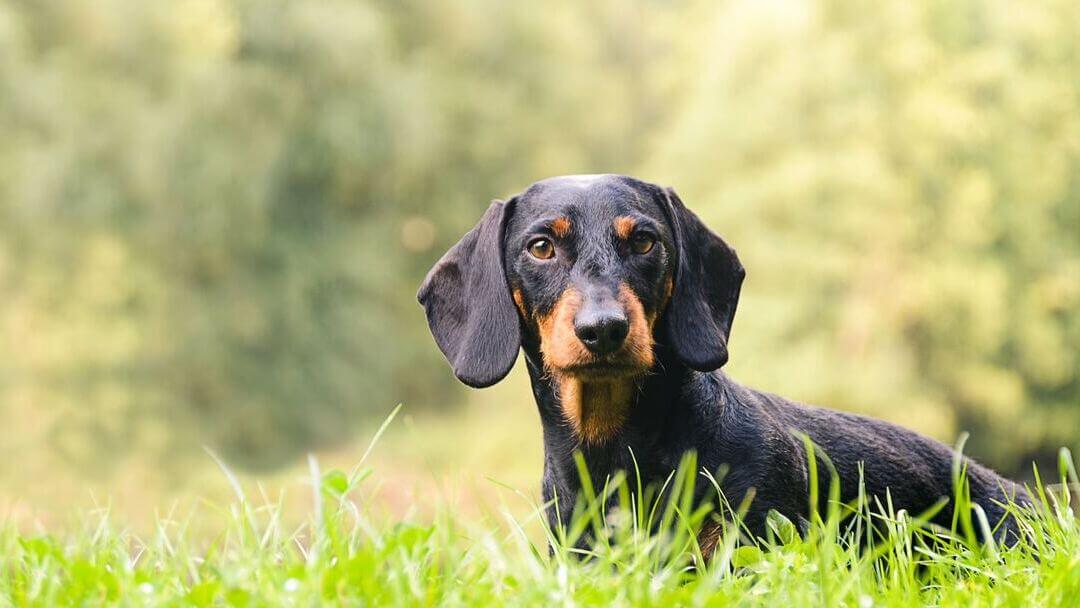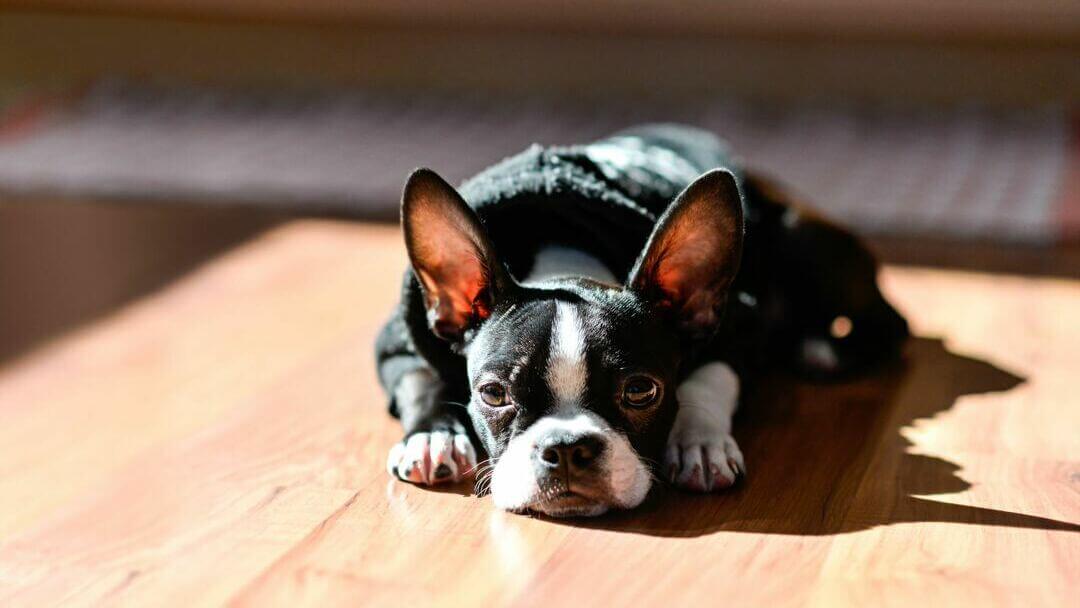
Working dog breeds are canines on a mission. They love nothing more than a job to do and will work tirelessly to get it done. Here is what you can expect if you decide to bring a working dog home.
Working breeds are dogs with a job to do and a body ready to work hard at it. But they show off plenty of different characteristics across the group: from agile guarding dogs, to gentle giants and sled dog, also known as the long-distance runners of the canine world. Here is everything you need to know about these beloved dog breeds.
A working dog's job description
Working dog breeds come from all over the world and are, as their name suggests, hard-working breeds specifically developed to excel in specialist, non-herding jobs. This is primarily guarding and protection for people, livestock or property - but they also include sledging, draught work and rescue. Many of these dogs could historically also turn their paw to other working roles where needed.
Sizes and coat types for working dog breeds
These dogs are all large or giant breeds, and have a variety of coat types depending on the country they called home and the jobs they were called upon to do. Larger breeds usually come from colder climates and this is the case with the majority of this group.
The natural instincts of working dog breeds
Like all the different breeds, working dogs utilise their natural canine behaviours to do the jobs that humans have developed them to do. Their instincts have been honed to perfection by successive breeding to watch for intruders and then take the necessary action.
Working breeds vary in how they use these instincts. Guarding dog breeds are extremely watchful and always on the alert for intruders or anything that could threaten their charges. Once an intruder or danger is spotted, they vary in their response as to whether they stalk it and then chase, or if they just chase. Once they have caught up to their target, they might grab-bite to stop them or bite far harder to disable them (or in the case of the Bullmastiff, pull them to the ground and sit on them!).
But not all of the working breeds guard. Some (Bernese and Newfoundland as examples) are known as the gentle giants of the dog world even though they are equally hard-workers. While others, such as the sled dogs, are the long-distance runners of the dog world.
Bear in mind that the predatory behaviour is self-rewarding for working dog breeds, which means they will need an outlet for these hard-wired instincts to manifest. However, don't think you need a country estate for your dog to protect or an arctic wasteland to sledge over, but it does mean that you need to be aware of these natural instincts and work hard to make sure your dog is fulfilled, happy and is a safe member of canine society.
Working dog breeds' behaviour and personality
In order to do their job successfully, working breeds have particular skills and characteristics.
Strong and determined
Many working breeds would be expected to confront any threat to their charges and so most are fully able to walk the walk and not just bark the bark! Others may be called upon to pull sledges or heavy carts which needs both strength and stamina.
But whether sledging or seeing off intruders, working breeds are the 'never give up' members of t
Active
While not as active as the pastoral or gundog breeds who are bred to be active all day, every day, most working breeds are still fairly active. Some will happily lazy around waiting for those moments when they are called upon to work.
Others, like the sledging dogs, can literally run all day and love to do so.
Strong-willed
Working dog breeds are able to deter even the most determined of adversaries or work tirelessly in their specialist jobs theses dogs are often as strong minded as they are strong in body.
Confident
Unlike some breeds who will alert owners to any perceived threat because of fear, these dogs are usually far more sure of themselves.
And since these are dogs better suited for experienced owners, here is what you can expect when you welcome these large dogs, strong in both body and mind, into the family.
- May be suspicious of strangers (human and canine).
- Need training and good management/handling.
- Can be highly territorial.
- Devoted to their owner and family.
- In the case of the flock guards, they may be happy being left for longer periods of time than other breeds.
- Quiet (apart from the sled dogs!).
- Surprisingly sensitive and need reward-based training.
- In the case of the heavily coated dogs (especially the sled dogs), they may shed heavily.
- These are dogs who are bred to have a job to do - and so without appropriate exercise, training and owner interaction can become bored and frustrated which can lead to destructiveness and potentially aggression.
- With good management and training, these can be the gentle giants of the dog world who will protect their family with an adoration that can't be matched.
Is a working breed right for you?
If you think a member of the working group is right for you, here are a few things to take into consideration.
Dog exercise requirement vary within the group. The guarding breeds tend to need less exercise that the pastoral and gundog breeds as their job is mostly to watch and wait , then spring into action when needed. They will still need daily exercise of between one to two hours a day. They prefer to enjoy frequent short walks with you rather than the occasional longer one. The sledging dogs however need to run - a lot.
Guard dog breeds love to play in the garden, and the frequent walks you enjoy together will help them use up their boundless energy. All this fun and exercise helps give your dog a break from being ‘on duty’ at home guarding you and your family – a job that all of these protection dog breeds do naturally, even though they are pets rather than working guard dogs!
Working dog breeds will grow up to be large, powerful dogs which is why they need training to ensure they are safe members of canine society. With proper dog training and sensible handling, they can be the most incredibly rewarding and devoted dogs to own. Without it, they can become a danger to others and to themselves.
Some of these dogs can turn their paw to obedience but they generally don’t have the ‘hang on your every word’ outlook that makes for champions! Some however make excellent dogs for the armed services as their intelligence coupled with their strength is ideal for this work.
The sled dogs will enjoy sports like Canicross or Bikejoring which gives them an outlet for their need to run.
Guardian dogs might also want to protect and guard things you don’t want them to have (such as the television remote)! The ‘give’ request is a good way to make sure their guarding instincts don’t get out of hand. When training your puppy, make a game of always replacing what they have in their mouth with something tastier (if it’s food or a treat) or more exciting (for example, substituting an old toy for a new one).
As some of the most protective dogs, guard dog breeds may be a little possessive. If your dog shows any sign of guarding their bed or other possessions, or being possessive of you or other family members, seek the immediate advice of a qualified canine behaviourist on referral from your vet.
Working breeds require early and ongoing dog socialisation to ensure they are accepting of unknown people and be around other dogs. Some may never be ‘dog social’ (especially males with other males) but with training and sensible handling, they can accept others in their immediate vicinity and so be walked safely. Sled dogs however enjoy living and working with others.
Because your guarding dog is probably large and strong, and their guarding instincts make them suspicious of people, it is vital that they are exposed to as much of the world as possible. The traits that have traditionally made them good guard dogs might make them more troublesome pets if they get used to ‘guarding’ too much!
Guard dog breeds can be quite powerful, which is one of the unique aspects of their type. Given this, it’s also important to get them used to being handled by different people, including strangers, while young. Your dog’s vet, groomer, walker or sitter will certainly thank you for making their lives easier when it comes to getting them back on their lead or taking them along for his check-ups. Using relaxed daily grooming sessions - whether their coat needs the attention or not - will produce the best results, as well as being enjoyable for you too.
Some working dog breeds are short coated and just need a wipe down with a cloth, others need extensive coat care and shed very heavily. Don’t hesitate to ask for dog grooming advice from the breeder on how best to care for your working dog’s coat.
Most guarding breeds are quiet and self-contained, while sled dogs enjoy a good howl and can be very talkative!
When relaxing in the house with you in their line of sight, most types of protection dog breeds will remain alert to anything unusual in their environment. They will immediately react to the sound of a car alarm or footsteps outside, and will often bark to alert you and to ward off potential threats.
Some dogs are more reactive and persistent than others, and teaching a good response to the requests of ‘speak’ and ‘shush’ is very useful. If you teach your dog to bark when asked, it will mean they can be vocal when it’s convenient for you both, such as outside on a walk, when it won’t annoy your neighbours. Teaching your dog to start and stop barking also means that you can quieten them more easily when they decide it’s time to barks indoors!
Most working dogs are totally devoted to their owners but show their affection by quiet closeness rather than cuddles. There are always exceptions however and some can be more aloof while others think they are lapdogs!
If your dog is very dependent on you, make sure they don’t become attached to the point of being unable to cope on their own. It is important that your dog is taught self-reliance from an early age to avoid separation anxiety in dogs. Provide a comfortable den-like indoor kennel (sometimes called a crate) or a cosy bed in a dog-proofed room where they can snooze or chew a favourite toy on his own. Exercise your dog before you leave them alone so they are toileted and ready to relax, and hide a treat-filled chew-toy for them to find and then work on to keep themselves busy in your absence.
Your protection dog is likely to be close to one individual in a family. To safeguard against over-reliance on the one person, ensure that all adult family members feed, train, walk and play with your dog, with older children also being involved in some of these tasks under the close supervision of an adult.
If you want a dog to play endless retrieve games with you, you will be out of luck! However, most working breeds enjoy enrichment games and some love to be challenged with regular scent work, tracking, and interactive dog brain games. Just make sure any toys you give them are strong, robust and safe. Treat every working dog as an individual and spend time finding out what games they enjoy.
The working dog owner checklist
If you think a working dog breed is the companion for you, here are some of the things that make a dog owner compatible with such an active breed:
- Experienced owner with good knowledge of handling large dogs.
- Have plenty of space both inside and out - rural locations preferred (working dogs are definitely not city dogs).
- Very secure garden - some of these breeds are escape artists.
- Lots of time to spend training and socialising - and giving appropriate and safe outlets for exercise.
Bonding with your working dog
The best way to bond with your working dog is to give them a job to do. However, make sure that the job is under your control and don't let them go 'self employed'. Find ways to exercise their minds and their bodies to prevent boredom and frustration - a good reward-based trainer can help you with this.
Your dog might sometimes seem reserved, but they will form close bonds with their family and have been known to defend them with great vigour. Strangers will often be viewed with initial suspicion, but friends and visitors, once introduced and accepted, will be seen as part of the group.
Some guard dogs are more demonstrative in their affection than others. Protective dogs such as Rottweilers, Dobermanns and German Shepherds are generally devoted to their owners, hanging on their every word, but some of the guarding breeds, particularly Mastiff types, are more independent.
If you want to know how to keep a guardian dog happy through training and socialisation, check out our article, next.
Discover all the working dog breeds (as recognised by the Kennel Club, February 2020)
Entlebucher Mountain Dog
Great Swiss Mountain Dog
Greenland Dog
Pyrenean Mastiff
Russian Black Terrier
